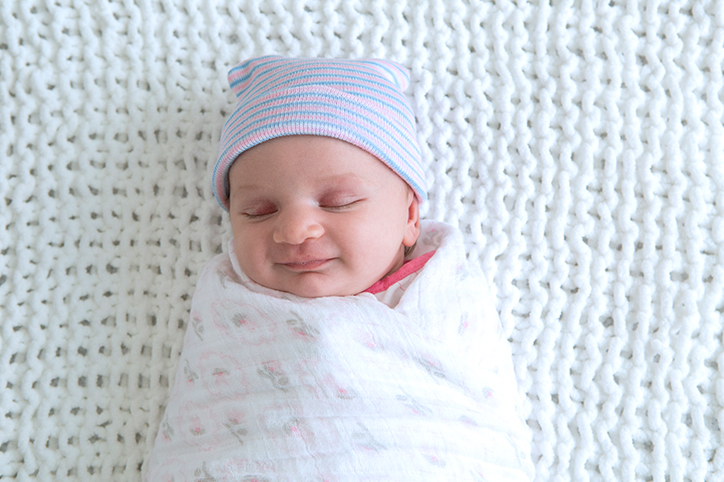If you have noticed dry, flaky or scaly patches on your baby’s head, it may be a case of cradle cap (also referred to as seborrhoeic dermatitis or crib cap). There’s no reason to panic, though – cradle cap is very common among new babies and it isn’t harmful at all. It’s also important to note that cradle cap will not cause your little one any serious discomfort. If your baby was older, it would simply be called dandruff rather than cradle cap.
Cradle cap can be confused with infantile eczema but the biggest difference is that cradle cap doesn’t typically cause significant itching, which often occurs in cases of eczema. Like eczema, cradle cap is not contagious, and it is not caused by poor hygiene. But you’re probably eager to restore his scalp to that sweet, silky softness all the same. Here are five natural ways to get rid of cradle cap:
Olive oil
Olive oil provides a moisture barrier for your baby’s scalp. It softens the skin flakes, making them easier to brush off and it helps soothe the skin and reduce inflammation. Rub a couple of drops of oil onto your baby’s head and massage it with your fingers or a cradle cap brush. Rinse the oil off with a gentle baby shampoo and brush again. Don’t let the oil sit overnight because this can clog the oil glands further and worsen the condition.
Coconut oil.
Like olive oil, coconut oil is useful because it can help loosen the cradle cap flakes on your baby’s head. Plus, it smells amazing! Apply a generous amount of the oil, then massage gently, leave on for a few minutes and rinse with shampoo and water.
Brush the scalp.
To remove scale build-up from cradle cap, gently brush or massage your baby’s scalp with a baby brush or comb. Sometimes hospitals send you home with a brush following delivery of your baby. A new toothbrush with gentle bristles also works. Move the brush in one direction on the affected area of the scalp to loosen flakes. You can do this on dryer wet hair but some doctors recommend doing it after the scalp has been hydrated. Brush once a day. If the scalp becomes red or agitated, brush less often.
Baking Soda.
Is there anything baking soda can’t do? To help heal cradle cap, mix equal parts baking soda and water to form a paste. Apply the paste directly to the scalp and let it sit for a minute. If you apply the paste right before bath time, you can rinse it off easily during the bath.
Use a humidifier.
Using a humidifier in your baby’s room can help to add moisture to the air and reduce the cradle cap on his head.
Cradle cap is unlikely to continue beyond a child’s first birthday, but if it does then speak with your pediatrician.








